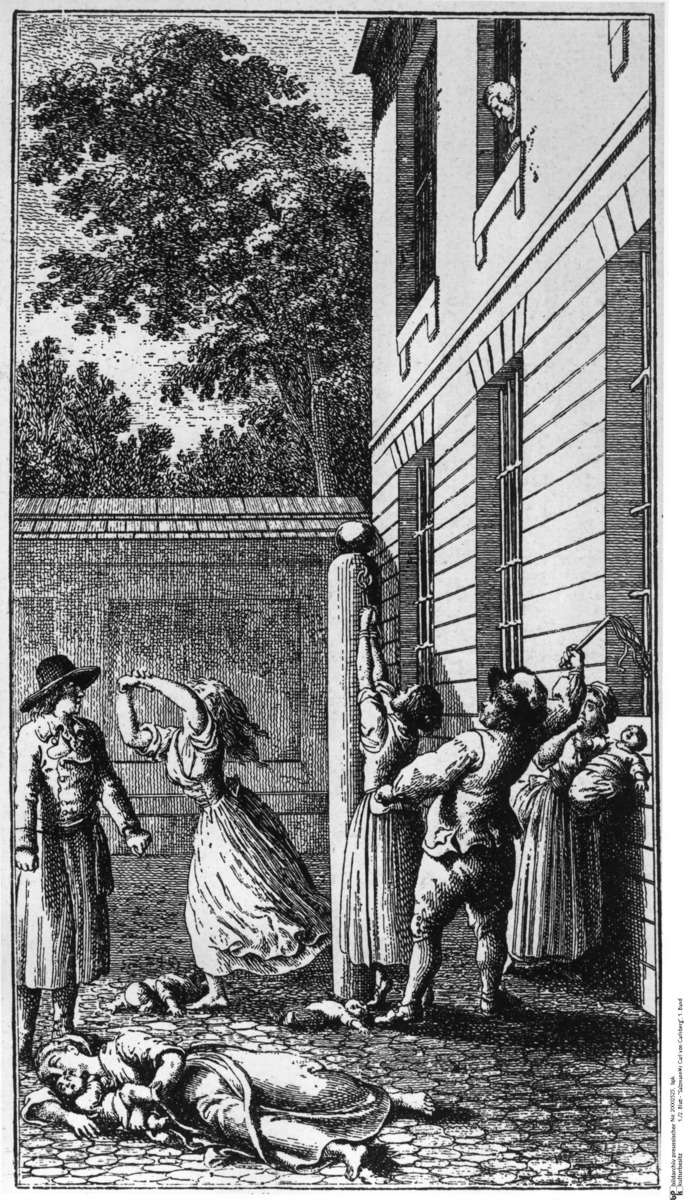Abstract
Whereas the Middle Ages had seen a relatively non-punitive handling
of sexual transgressions, the Protestant Reformation and Catholic
Counterreformation ushered in stricter moral codes and harsher punitive
measures. In cases of premarital sexual relations, especially those
resulting in pregnancy, German courts aimed first to induce the parties
to marry, but also levied fines or corporal punishment. Women whose male
sexual partners would not assume co-responsibility often found
themselves branded as “whores” and subsequently flogged. Adultery was
treated as a serious crime, for both parties involved.
This image comes from the novel Carl
von Carlsberg or: On Human Misery (vol. 1, 1784) by Christian
Gotthilf Salzmann (1744-1811). It shows a woman being flogged at the
stake. The novel’s protagonist, Carl von Carlsberg (left), witnesses
this event during his travels and, moved by Enlightenment opposition to
cruel physical punishment, offers words of protest to the whip-wielding
bailiff and the mayor in the window. A public advocate for unwed mothers
and their children, Salzmann argued that fear of flogging or fines
served to encourage infanticide, a crime that was punishable by
death.
